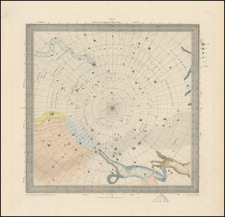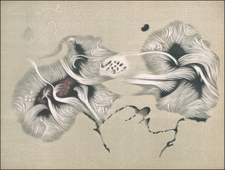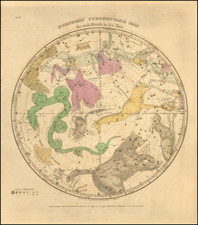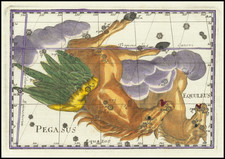Fine early images of Donati's comet, from a German publication.
Includes a popular image of the comet crossing the night sky, with two close up images illusrating the comet on October 2, 1858 and October 10, 1858.
Donati's Comet
Donati's Comet (C/1858 L1 and 1858 VI) is a long-period comet named after the Italian astronomer Giovanni Battista Donati who first observed it on June 2, 1858.
After the Great Comet of 1811, it was the most brilliant comet that appeared in the 19th century. It was also the first comet to be photographed
Donati's Comet is considered to be one of the most beautiful comets observed] and was one of the brightest of the 19th century, making a strong impression both on artists and the general public. After a prior period of hysteria on the subject of comets, Donati's Comet went on to be the most-observed of the century due to its excellent visibility in dark skies for Northern Hemisphere viewers. William Henry Smyth, an English astronomer, recalled it as "one of the most beautiful objects that I have ever seen".
Donati's Comet appears as a streak and star in the early evening sky of a painting by William Dyce, Pegwell Bay, Kent – a Recollection of October 5th 1858.
The Comet was featured in a number of sketches and at least one painting by William Turner of Oxford, and in a painting, "The Comet of 1858, as seen from the Heights of Dartmoor", by Samuel Palmer. The Comet at Yell'ham, a 1902 poem by Thomas Hardy, was inspired by his recollections of Donati's Comet.
Abraham Lincoln, then a candidate for a seat in the U.S. Senate, sat up on the porch of his hotel in Jonesboro, Illinois, to see "Donti's Comet" on September 14, 1858, the night before the third of his historic debates with Stephen Douglas.
The influence of the comet, particularly in visual and design terms, was such that traces of its appearance can be found in magazine and commercial illustrations, household objects, children's books and other items up until the early years of the 20th century.











![[ Orion / Canis Minor / Lepus ]](https://storage.googleapis.com/raremaps/img/small/102620.jpg)
![(Sundial) Horologium Horizontale [Fig. 10 Cap II]](https://storage.googleapis.com/raremaps/img/small/78870.jpg)

